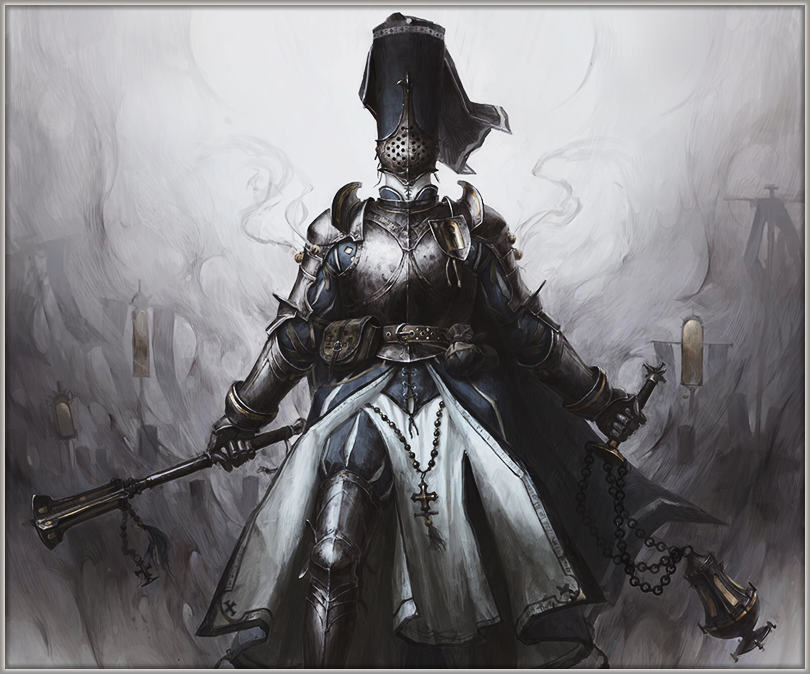Grave
Contents
The Origins
Grave is a relatively new magic, created some time before the advent of the Dunash, around the year 4500. Forged by Y'shendra, it was created as an offering to her most ardent followers, a tool through which they could both spite the Living Gods and supplement her will. Like Sigilic Pyromancy, both Grave and its Ascension were originally confined to the boundaries of a Holy Order, though with time the magic bled out into the cracks of Atharen and Icheron, becoming appropriated by magi like those in the Daravinic Entente. Now, Grave is an uncommon but well-documented magic, and an essential weapon in the artillery of both clerics and those who wish to wield the might of the undead.
Concepts
Nightorch: The Nightorch is the conduit through which most Engraving is done, acting as a secondary and essential component to perform the magic's many feats, alongside ether. As is established in Druidism, the majority of healing done on Atharen requires a transference of life from one entity to another. While Druidism largely relies on siphoning the life of plants, Grave utilizes a taboo source of energy: mortal souls. Early on in the magic, the Engraver learns to harness souls from the recently dead, siphoning them into their lantern: the Nightorch. This lantern, one with a regulating lid that allows for the transference of souls and energy in-and-out, is the Engraver's most fundamental tool.
Vitescence: While many Engravers rely on the Nightorch as their source of vitality for both healing and reanimating corpses, the most enthralled of practitioners tend to source from a tertiary component known as Vitescence. Vitescence is one's own vitality, though with little risk of death through its overuse. Instead, Vitescence is often referred to as the 'vibrance' and 'liveliness' of one's body, and its consumption to perform abilities rarely results in lethal consequences, but instead a temporary, withering decay of one's health. As one utilizes more and more Vitescence, they begin to appear more corpse-like and shriveled, their skin greying, their features becoming more bony as their skin deepens into their face. They become physically weaker and more frail, though many would argue the usage of Vitescence is worth it.
Vitescence, while not mandatory to use, allows for one to exceed their limitations in both healing and resurrecting the dead, augmenting one's capabilities without expending much in the way of additional ether. When one's supply of souls is depleted from the Nightorch, or they are suffering from the jaws of Overstepping, Vitescence presents itself as an attractive tool to continue to push the Engraver towards their limits.
Initiation
Work in progress. Mark of Control is an onyx, gothic cross.
Overstepping
The drawbacks listed below do not always come in pairs, and certainly not simultaneously. Some may come and others may not.
Lesser: Nausea, fatigue, headaches, muscle spasms, dehydration
Moderate: Bleeding through the nose, eyes and ears, intense cramps, seizure-like shocks and spasms, internal bleeding, vomiting and weakness
Severe:
Mutations
Abilities
WIP: WIP.
Agony: Hastily reanimate a corpse, causing them neurological anguish and channeling that pain into hunger and violence. WIP.
Hound: Force the corpses of the dead to reveal information, using vestigial echoes of consciousness. WIP.
Repose: Sustain the damage of wounds over a longer period of time, enduring their initial trauma in favor of a more prolonged, but less extreme response. WIP.
Ghast: Stitch multiple corpses together with magic, rearranging their parts before reanimating them into one powerful undead. WIP.
Blacksworn Abilities
Forsaken: A black wind rolls over the field, reanimating every single corpse within miles to be controlled by the Blacksworn. WIP.
Novice
Apprentice
Journeyman
Expert
Master
Ascension: The Blacksworn
x
